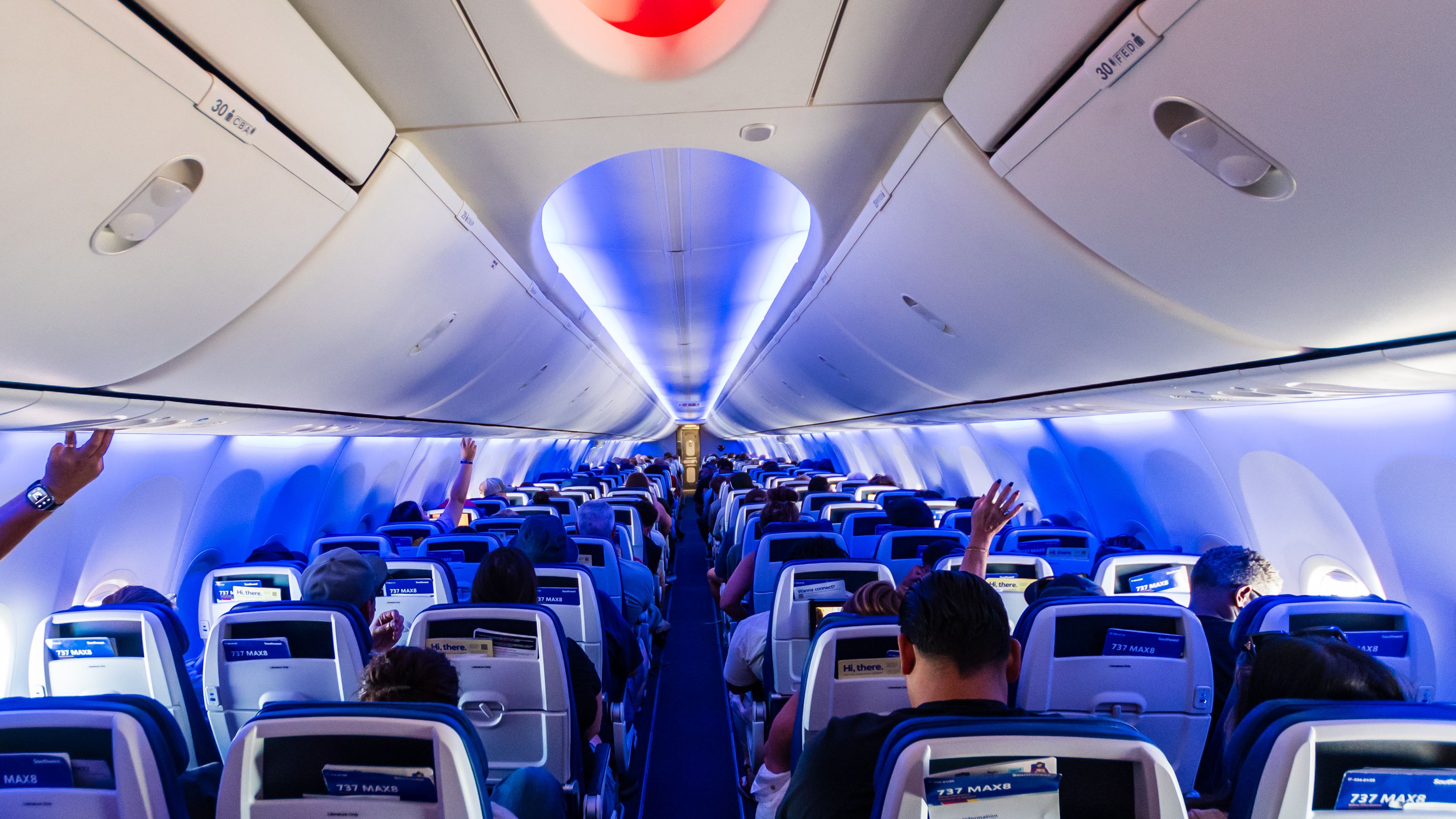New Safety Rule Requires Southwest Flight Attendants To Prepare For Landing At 18,000 Not 10,000 Feet
A  Southwest Airlines memo has surfaced on aviation blogs and confirmed by Southwest Airlines that Southwest Airlines’ flight attendants (aka cabin crew), starting December 4, is to secure the cabin at 18,000 feet and not 10,000 feet before landing. The new procedure, based on years of research plus flight attendant Safety Management System (SMS) will reduce the risk of injury to flight attendants by 20%.
Southwest Airlines memo has surfaced on aviation blogs and confirmed by Southwest Airlines that Southwest Airlines’ flight attendants (aka cabin crew), starting December 4, is to secure the cabin at 18,000 feet and not 10,000 feet before landing. The new procedure, based on years of research plus flight attendant Safety Management System (SMS) will reduce the risk of injury to flight attendants by 20%.
Starting decent preparations earlier
As per an internal memo, Southwest Airlines, starting December 4, will implement a new cabin descent policy. The memo states new procedures will begin after collaboration between Southwest Airlines’ Inflight Safety and the flight attendant union TWU 556; the descent will begin with the pilots announcing such from the over 30,000 feet above sea level in altitude Southwest Airlines cruises at.
Photo: Joe Kunzler | Simple Flying
The memo then states,
• At 18,000 feet, the Pilots will make one high-low chime, indicating the start of sterile flight deck. This chime serves as your cue to secure the cabin for landing and to be seated and secured in your jumpseats.
Southwest Airlines’ change in procedure comes after “years of research”, reports in Southwest Airlines’ safety management system, and Southwest Airlines’ Flight Data Analysis Program to aim to reduce flight attendant injuries by 20%. But being serious journalists, we at Simple Flying sought confirmation of the memo.
Southwest Airlines’ confirmation reveals why
A kind Southwest Airlines spokesperson confirmed the above memo and shared with Simple Flying with Southwest Airlines’ unique capitalization;
“Southwest Airlines Flight Attendants will begin preparing the cabin for landing at an altitude of 18,000 feet beginning Dec. 4. The change in procedures is designed to reduce the risk of in-flight turbulence injuries for our Crew Members and Customers. It is the result of the airline’s close collaboration with its Labor Partners and a robust approach to Safety Management. Previously, preparation for landing began at 10,000 feet. Nothing is more important to Southwest Airlines than the Safety of our Customers and Employees.”
From the above statement, Southwest Airlines is changing policy because turbulence has been a documented cause of flight attendant injuries and has become a global aviation concern.
Southwest Airlines Flight 3633 incident exemplar of why
Growing global turbulence issues and other safety incidents are forcing not just reviews and 1-day refresher training for pilots but policy changes at one of the United States’ leading airlines. Again, many inputs into Southwest Airlines’ data systems led to the policy change. The August 7 incident on Southwest Airlines Flight 3633 of a Boeing 737-700 helped stress the need to secure the cabin earlier. Simple Flying did an initial report:

Related
Southwest Airlines Passenger Suffers From Severe Injuries After Turbulence Rocks Boeing 737-700
Rough air incidents are on the rise as the world grapples with climate change.
The FAA also investigated, and published their findings on October 28. The FAA’s report noted the 737-700 encountered turbulence at 19,000 feet, and the injured passenger was in the name of stretching already disregarding flight attendant requests and the cabin seat belt light to return to the passenger’s seat and use the seatbelt.
However, as the flight attendants explained to the FAA, after the stretching passenger was given directions to sit by the B position flight attendant, the descending 737-700 hit turbulence, and the passenger fell into the galley and broke her ankle with a protruding bone. Within seconds, the other flight attendants and a deadheading flight attendant, with help from nurses, flying as passengers, attended to the injured passenger. Despite the risk to self, the deadheading flight attendant stayed on the cabin floor with the injured passenger as time was nonexistent to move the passenger.
This incident is one data point of many leading to Southwest Airlines’ policy change; but shows that flight attendants are trained as safety professionals first, not just looking gorgeous running a bar cart. With a landing commencing, the flight attendants of Southwest Airlines Flight 3633 acted calmly and courageously as landings are the most dangerous part of flight.
Additionally, a review of Flightradar24 data for Flight 3633 shows that an additional three or four minutes of the secured cabin is what the altitude change would have resulted in. The author then checked his last four Southwest Airlines flights on Flightradar24 and found a rough average of 5 minutes and 15 seconds of additional secured cabin. However, based on many data points, the relatively minor inconvenience of five minutes is intended to reduce flight attendant injuries by 20%.
Southwest Airlines is making a new change in its landing preparation policy based on many data points. The goal is to reduce flight attendant injuries by 20%. August 7’s Flight 3633 incident serves as an exemplar of why the policy change is needed, as the deadheading flight attendant could have gotten hurt securing the passenger injured from turbulence on the floor.



